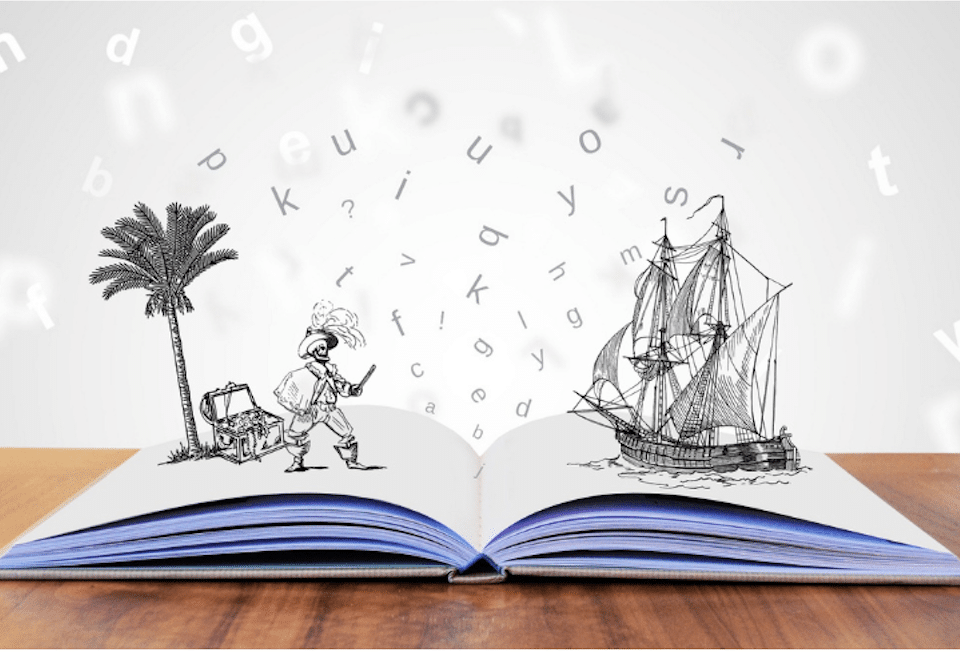
“L’ AMOUR TOUJOURS: How long is your summer love destined to last? – Chapter 2
14 July 2016
90% OF NEW SKILLS ARE FORGOTTEN AFTER TRAINING
7 September 2016“L’ AMOUR TOUJOURS: How long is your summer love destined to last? – Chapter 3

Summer is good for Love. It is a well-known fact.
Established couples renew their feelings thanks to the free time, relaxation and little vices they can indulge in during the holiday period.
Those who are single and looking for their soul mate can instead show off their skills in the art of courtship.
But what are the non-verbal indicators – serious and objective – that reveal to us the real interest of the other person, and which ones should put us on the alert?
“Biting one’s lips”, “stroking one’s hair”, “showing one’s wrists” or “toned muscles”, or “crossing one’s legs in the direction of the other when sitting down”… manuals on non-verbal communication and the internet are often full of generalised but scientifically unverified hoaxes that tend to reduce the complex world of emotions and behaviour to simple “if he/she makes this gesture… then he/she likes you” inferences.
When it comes to emotions and feelings, it is often impossible to deduce from a single gesture, a posture, or a single approach of the interlocutor (proxemics), a sure good predisposition to us and our courtship, that is, a ‘pass’ indicating that we should continue in what we are doing because it pleases the other person.
Let’s try to examine what is true and what we should consider less reliable in the ‘body language’ world associated with the courtship phases.
Today we will talk about auto-adaptations (manipulative gestures) and the power of spontaneous micro-expressions in predicting the duration of a relationship. Here we reveal the main truths and false myths related to the ‘non-verbal language of love’.
[/vc_column_text][/vc_column][/vc_row][vc_row][vc_column][vc_row][vcex_heading text=”THE MANIPULATING HANDS OF THE BODY AND THE FACE”][vc_single_image image=”2485″ css=” vc_custom_1471686335633{margin-top: 20px !important;margin-bottom: 20px !important;}”][vc_column_text css=”.vc_custom_1471686132573{margin-top: 30px !important;}”
According to Paul Ekman, the term adapters (or manipulators) describes a series of gestures that allow one to make contact with oneself (self-contact, i.e. contact of one part of the body with another part of the body: e.g. “scratching the back of the neck”) or with objects in the outside world (people, animals or things).
These are movements learnt during childhood in an effort to adapt one’s behaviour to the environment and to cope with or satisfy emerging internal drives (hunger, need for attention or physical contact with parents, etc.). They can also be enacted to counter the manifestation of strong emotions.
The confusing aspect of these gestures lies in the fact that, although they are learnt during childhood, when they are emitted in adulthood they are never fully and identically performed, nor are they necessarily triggered by the same environmental stimuli already encountered during childhood.
To give a rhetorical example: we would never notice in an adult, in a public context such as an important appointment with a client, the childish gesture of ‘sucking one’s thumb’ to reassure oneself from anxiety, but we might instead observe the same person biting their nails, playing with a pen, or sucking their lips inwards to lick or nibble them just barely, unseen and fleetingly.
These are therefore partial gestures: they come close to the complete gesture made in childhood, they change form and triggering stimulus in adulthood, but their original function remains the same (regardless of the awareness of the person making them).
An example of self-adaptation such as ‘licking one’s lips’ can often be seen manifesting on someone’s face. This gesture does not have an unambiguous and clear cause, nor can it be defined as a ‘signal of liking’ (sexual or cognitive), as we often see it mistakenly written online.
The gesture simply reveals that the person’s Sympathetic Autonomic Nervous System is activated at a given moment: there is a state of non-specific neurophysiological arousal.
Just think that, from an ethological and psychological point of view, a mimicry that employs showing the tongue can also be used as an emblematic gesture in place of words to tease someone (“making the bad language”, typical in children) or to flirt in a daring and provocative way (licking the lips, in an obvious way, looking or winking at the interlocutor who is the object of our attention).
The same non-verbal act also has many other meanings, depending on the culture to which the person emitting it belongs.
Licking one’s lips can also be manifested when the person is feeling a great deal of anxiety, but also when he or she is completely relaxed (a grooming aimed at cleaning one’s lips, performed in tranquillity, since in the presence of familiar people with whom he or she is very familiar). Or when the person is trying to moisturise their lips because they are thirsty (the person is thirsty or has been talking for a long time, so they moisten their lips).
So how can we understand what the correct meaning of this non-verbal signal is?
With respect to manipulative gestures, it is always inadvisable to give a clear meaning that interprets their possible meaning or function. They should only be considered if at the same time one observes with the same attention other indicators from the face, the body, the voice, as well as of course considering the context in which the non-verbal signal is emitted. Beware, therefore, of overestimating the importance of these gestures, as interpreting them as sure indicators of a hidden attitude or emotion directed towards us may be misleading or even undermine the harmony created in the relationship so far.
[/vc_column_text][/vc_column][/vc_row][vc_row][vc_column][vc_row][vc_column][vcex_heading text=”THE POWER OF SPONTANEOUS FACIAL EXPRESSIONS”][vc_single_image image=”2486″ css=”.vc_custom_1471686394603{margin-top: 20px !important;margin-bottom: 20px !important;}”][vc_column_text]
What makes facial expressions important is that they represent the most reliable non-verbal channel when one is able to distinguish spontaneous from voluntary elements.
Expressions are thus termed voluntary when they are emitted deliberately, last longer than spontaneous ones, and are more influenced by social norms of display (cultural rules of manifestation: e.g. ‘making a happy face to look happy’ when receiving a gift that is actually unwelcome, so as not to offend the other person). Or they can be used emblematically as a substitute for words (think of saying ‘…mmm, this t-shirt is really nice…‘ making a deliberately disgusted face, to be sarcastic).
They are therefore facial expressions that do not reflect a real emotion felt at the time, but are used to deliberately convey a known communicative concept.
Spontaneous expressions, on the other hand, are quicker, better coordinated: some muscles, for example, are difficult to move voluntarily; in the course of a truly felt emotion, they are instead activated without difficulty.
.
The non-verbal way of transferring feelings plays an important role in our most intimate relationships. John Gottman has shown that married couples who display micro facial expressions of disdain and disgust towards their partner divorce between 4 years and 6 years. Preventing and intervening sometimes saves the couple. (Why Marriages Succeed or Fail: What You Can Learn from the Breakthrough Research to Make Your Marriage Last).
.
Why do we need to pay special attention to these two emotions (and micro facial expressions) in relationships?
.
The disgust is an emotion linked to sensory and cognitive repulsion, whereby the person experiencing it tends to move away and away from an object (or person, or thought expressed by someone) that he or she considers ‘poisonous’ or contaminating. The manifestation of this emotion, especially in the sexual sphere, defuses any possible physical attraction towards a partner and drastically nullifies libido. It thus creates a distance, both physical and mental, between partners.
The disdain is instead linked to a sense of moral superiority over the other, who is seen as ‘less beautiful’, ‘less intelligent’, ‘less deserving’ of our time and attention. Such a relationship creates asymmetry and inequality. It dehumanises the other, and places him or her on a metaphorical ‘lower step’ than ours: respect for the person next to us is lost, so that those who feel contempt in the couple focus more on their own needs to the detriment of the needs expressed by their partner. Any harmony is thus broken.
Anger is another dangerous and destructive emotion in a relationship, especially when it is violent, unexpected and explosive. When instead it is used constructively, in respect of the other and in defence of the couple, it can often make people pro-active, creating a ‘determined’ alliance in the couple: the two partners will once again be allied and aligned, and their anger and determination will be aimed at defending their bond and redirected to eliminate any problem or obstacle that might undermine harmony.
Another emotion not to be underestimated is trisk. Knowing how to pick up on its subtle micro-expressions (manifesting in a disjointed manner on the upper or lower part of the face) can play a decisive role, as the person next to us may involuntarily express their desire to receive support or support, while verbally denying it (perhaps out of pride or a desire not to show themselves vulnerable before us).
Sadness may also express a desire to be left alone for example to be able to reflect better, or to recharge one’s batteries without being disturbed. If this desire for temporary solitude is not respected, perhaps by being too solicitous, we may cause annoyance as the partner may feel that his or her ‘psychological territory’ has been invaded (see: Prossemic).
This can also apply to subtle micro expressions of fear. Noticing them makes all the difference. Take, for instance, when dealing with crucial issues involving major changes in the couple’s lifestyle: moving in together, moving house, expressing the intention to have a child in the couple, etc. Most of the time, in fact, when the partner feels understood, welcomed, supported in facing the problem, and never judged, he feels that it is human and legitimate to feel and express fear. There is nothing wrong with this. Fear is welcomed, and the couple again approaches any problem in a considered and pro-active manner.
The happiness one shares with one’s partner is the driving force behind love. Knowing how to recognise and distinguish facial expressions and micro expressions of spontaneous happiness from social smiles can make all the difference. There are as many as 16 different types of Happiness, so identifying their cause and function can provide us with valuable information about the feelings our partner or future partner may be experiencing in our company. Each of us is ‘in search of happiness’, and knowing how to identify what makes us or our partner truly happy is indispensable. Simple and complex at the same time, but extraordinary and rewarding for both of us.
[/vc_column_text][/vc_column][/vc_row][vc_row][vc_column][vcex_heading text=”CONCLUSIONS”][vc_single_image image=”2487″ css=”.vc_custom_1471686438291{margin-top: 20px !important;margin-bottom: 20px !important;}”][vc_column_text]
Just as there is no “Pinocchio’s nose”, i.e. no single gesture that lets us know when a person is lying, there is no “Little Heart Eye” at the non-verbal level that can tell us with 100% certainty whether a person has sexual or emotional interest in us. Emotions and cognitions always manifest together in long-term feelings such as Love, so both the emotional and cognitive domains play a crucial role.
Shared time, attraction and shared values are essential in building and maintaining a relationship.
But knowing how to notice our partner’s small voluntary and involuntary reactions and the emotions he or she may feel with us can put us at an advantage, in order to surprise him or her every day with small gestures of love, or to avoid receiving nasty surprises instead: ‘living a love film’, as we know, is not the same thing as ‘making a film’ only in one’s own mind, ignoring the other’s needs.
Watching our partner, as well as being pleasurable, is therefore a habit that is anything but superfluous!


